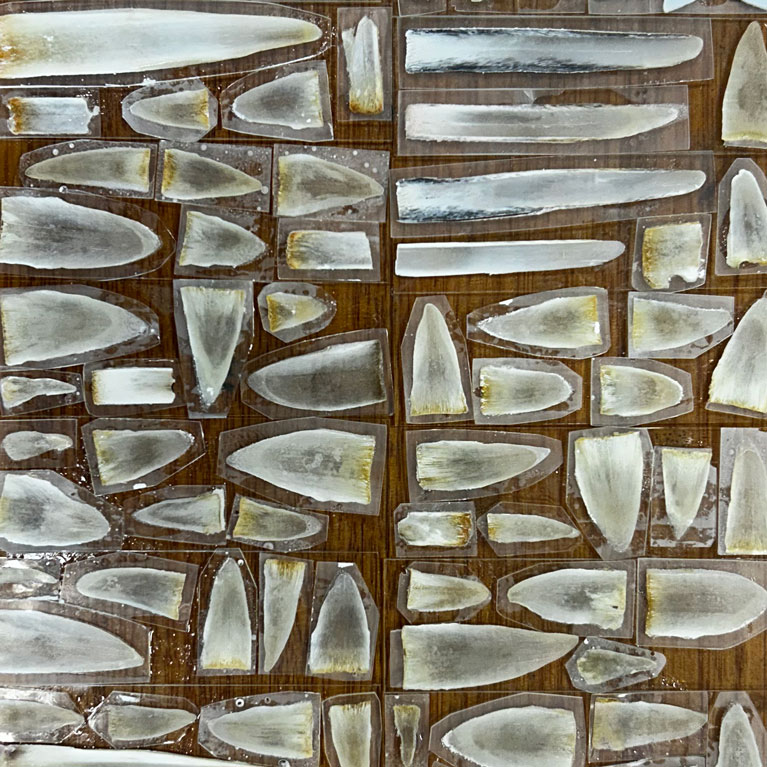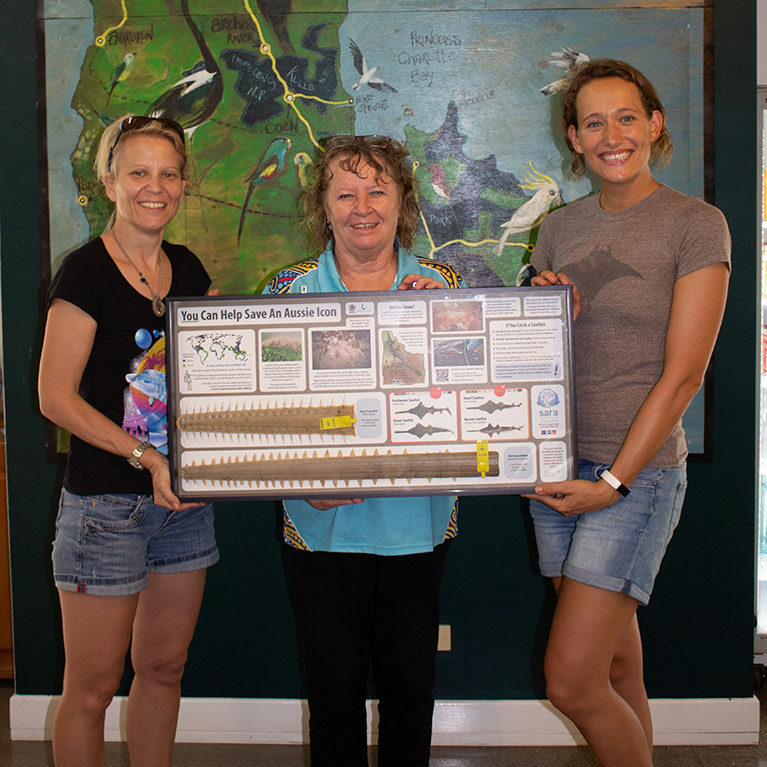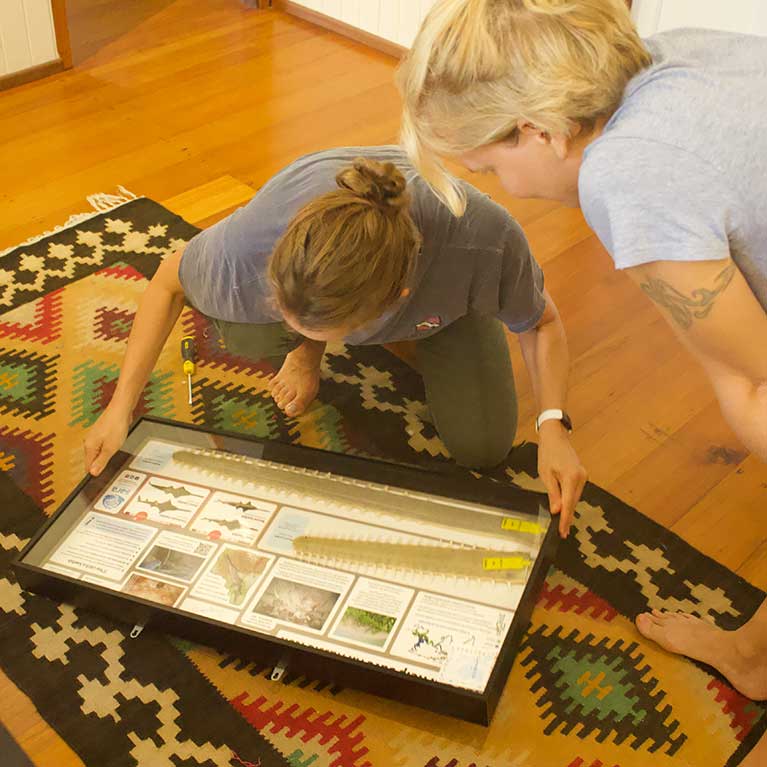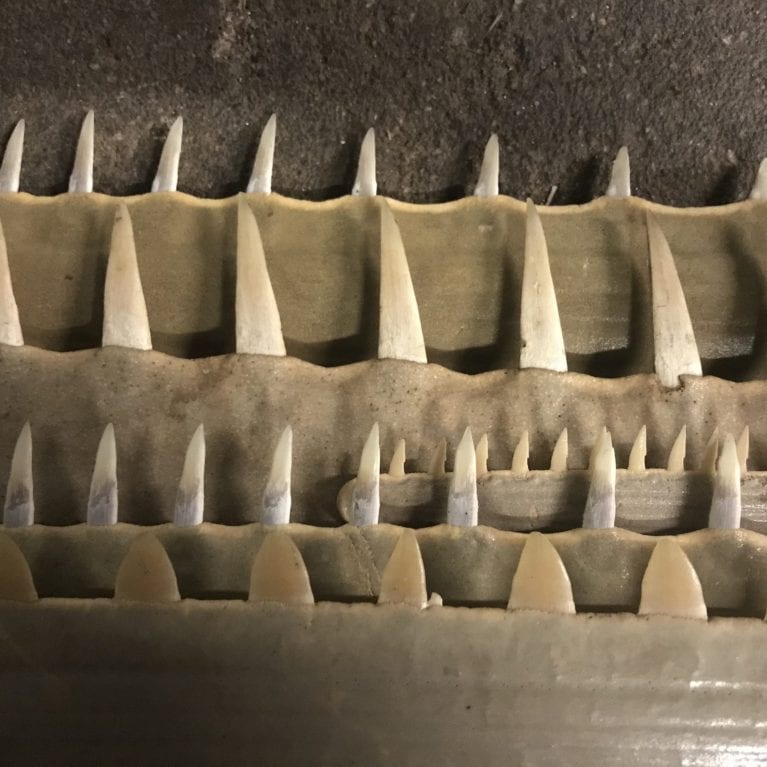A new use for old things: saving sawfishes with repurposed rostra
Veronika is giving old sawfish trophies a new lease on life by constructing 25 educational cases that will be displayed across Far North Queensland. In doing so, she is hoping to transform these rostra from sawfishes of the past into a symbol of hope and caution that connects communities to the conservation of sawfishes in northern Australia.
Since I grew up in California and Hawaii, it probably isn’t surprising to hear that I always felt most at home near the ocean. At a young age I became a certified diver and family vacations were planned around predicted visibility and the movements of pelagic species. After completing my Master’s degree in medical sciences at Boston University School of Medicine, I moved back to the coast, splitting my time between volunteering in vertebrate fossil curation at the San Diego Natural History Museum and working as a teacher. Ever determined to get back into the water, I took...




A new use for old things: saving sawfishes with repurposed rostra
The objective of this project is to inform fishers and the general community on how to safely release sawfish in the event of capture, and obtain data on distribution for further analysis.
The protection of sawfish in Queensland requires our immediate attention. Tropical North Queensland remains one of the last strongholds of sawfish populations, and thus the best chance for gathering data and preserving hunting and breeding grounds. The ongoing work by SARA under the lead of Dr. Wueringer (SOSF Keystone Grant 309) has uncovered sawfish still being finned and saws being amputated by commercial and recreational fishers. This project will directly instruct recreational fishers through their potentially fatal interactions with all four species remaining in Australia. Furthermore, these display cases uniquely target both fishers who are specifically targeting sawfish as trophies, and those who are untrained, in proper release methods. As a side benefit, they also educate the general community, creating opportunities for citizen scientists interested in working with SARA on further research.
Globally, sawfish populations are in critical condition. In the last century, ranges have contracted severely. All species are listed on the IUCN Red List as Endangered or Critically Endangered. The Australian populations of largetooth, dwarf, green and narrow sawfishes are thought to be the last viable populations of these species, and therefore central to global conservation efforts. Conserving small, isolated populations can be difficult because they are not replenished by animals migrating from elsewhere.
The very adaptation that led to sawfishes’ success is now their downfall. Their highly developed rostrum makes sawfish prone to entanglement in fishing nets. While bycatch data suggests that sawfish have a high survival rate upon release, their overall numbers have significantly declined in both reported sightings and by-catch records from the Queensland Shark Control Program. Furthermore, it is unclear how widespread the practise of amputating the saw of sawfish before releasing them is, but saw-less, live sawfish have recently been observed in Western Australian and Queensland waters. Despite reports of sawfish surviving the loss of their saw, they are understandably less able to reproduce and defend themselves without it.
- This project aims to reach recreational fishers in public locations throughout Tropical North Queensland. The displays will contain information about sawfish, release methods and an automated reporting system. This streamlined system aims to increase not only the number but accuracy of these reports.
- The reporting data will contribute to our ongoing study of sawfish distributions and ranges, both historic and recent. The data will also contribute to a comparative analysis of methods towards successful release of sawfish.
- These displays will directly educate the community on the importance of sawfish conservation. Over the course of the year, we will use this data to determine how effective this outreach is in decreasing bycatch fatality.

